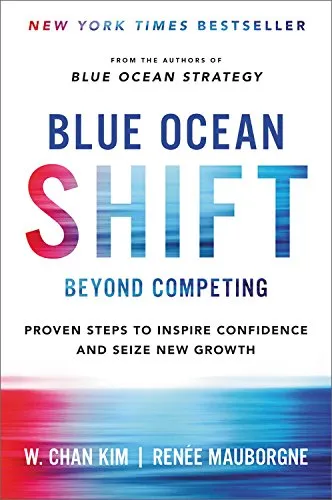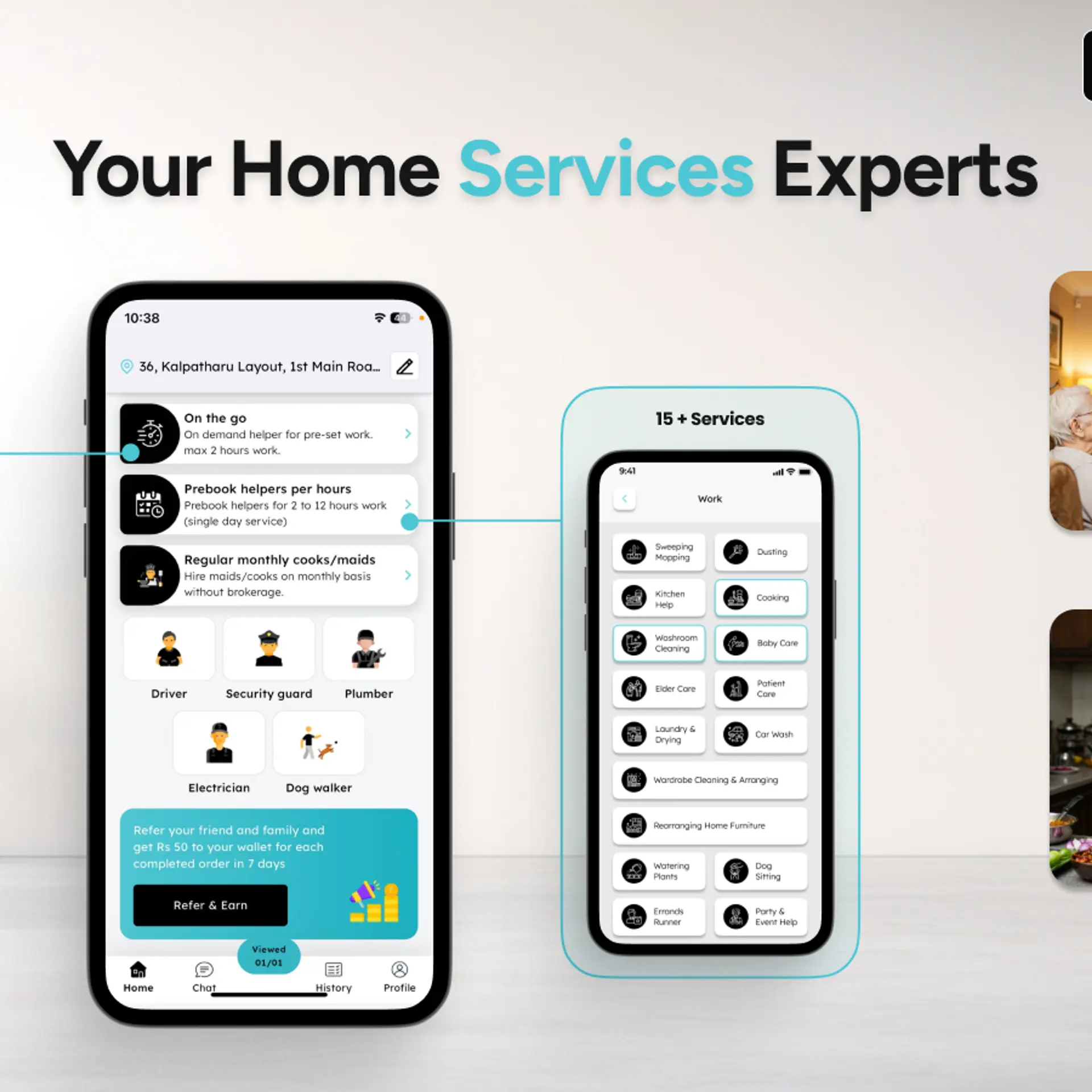Blue Ocean Shift: how these market-creation tips and tools can power new innovations
Is disruption and competition the only way for innovators to survive? This book offers useful tools for entrepreneurs to envision and open up new market possibilities.

Startups, large companies and even government agencies can open up brand new avenues for innovation if equipped with the right mindsets and tools. The book Blue Ocean Shift: Beyond Competing - Proven Steps to Inspire Confidence and Seize New Growth provides useful roadmaps and case studies for innovators.
W.Chan Kim and Renée Mauborgne are Professors of Strategy at INSEAD and Co-Directors of the INSEAD Blue Ocean Strategy Institute. Their earlier bestseller is Blue Ocean Strategy.
The books’ online companion has a number of free tools for readers to download. Many of the case studies are based on how large companies have reinvented themselves and changed strategy, but some of the tools will be useful for startups as well, eg. Buyer Utility Map.
Here are my six takeaways for innovators from the 320-page book. See also my reviews of related books like The Lean Startup Way, The Innovator’s DNA, Gamechangers, Originals, The Innovation Code, Cross-Industry Innovation, Frugal Innovation, and A Beautiful Constraint.
1. Understand the different types of innovation
Innovations are generally of three types: solutions for existing industry problems, targeting of entirely new opportunities or problems to solve, and redefining existing problems (in between the previous two types, eg. Cirque de Soleil, which combined elements of circus with theatre and also attracted new audiences; ActiFry; National Youth Orchestra of Iraq).
The landscape of strategy is full of many models of innovation, such as creative destruction (Schumpeter) and disruptive innovation (Christensen). Creative destruction occurs with the arrival of a better technology, eg. displacement of film-based photography with digital photography. Disruptive innovation occurs with the arrival of a technology which is initially inferior but then becomes better, catching incumbents off guard, eg. PCs, cellphones.
The authors classify both these types of innovation as “disruptive creation,” where old jobs are destroyed and new ones created, eg. with successive waves of cassette tape, CD and MP3 players. On the other hand, “non-disruptive creation” does not necessarily displace existing players, but creates new employment and growth.
“Red oceans” are cut-throat markets with bloody competition; “blue oceans” are wide-open markets devoid of competition. “Blue oceans are less about disruption and more about non-disruptive creation, where gain doesn’t have to come at the expense of others,” the authors explain.
Examples of Blue Ocean innovation include Starbucks, Viagra, Square, Grameen Bank, crowdfunding, health clubs, ringtones, and even life-coaching. They have created new offerings and jobs without destroying others. Potential new markets for innovators lie in cybersecurity, lifelong learning, VR, and environmental solutions.
2. The Blue Ocean approach
Shifting from market-competing moves to market-creating moves involves questioning existing market assumptions and boundaries, and breaking the traditional value-cost trade-off by creating new kinds and degrees of value.
“Industry boundaries are not fixed. They are as fluid as your imagination,” the authors explain. Widening the creative pallet and reframing the opportunity is key to redefining industry conditions instead of accepting them. This calls for defining and addressing “non-customers” as well.
Typical innovation challenges are cognitive (wedded to the status quo), motivational (skepticism, hesitation), resource (limited budget, talent), and political (tensions, silos, turf wars). Success with the Blue Ocean model comes from an expanded vision, effective tools, and humanistic cultural change.
At the human level, innovation shifts require employee fears and insecurities to be addressed, and the nurturing of creativity, confidence, dignity and ownership. Blue Ocean innovation strategies take years to plan, assess and launch. They will succeed if broad-based employee engagement is encouraged, in activities ranging from visioning and market research to presentations and feedback on innovation choices.
3. Market position and strategy map
The authors have developed five steps and tools to launch Blue Ocean strategies. Begin by understanding whether you are a pioneer (value innovation), migrator (value improvement) or settler (value imitation), and what your position will be after your new moves.
Many companies, even with investment in R&D, are unable to create innovative value that customers will pay for, and compete as me-too settlers. Innovation opens up new pathways, but companies must strike a balance between successful, established products and investing in future bets. This strategic discussion must have cross-organisational involvement, and be facilitated by an influential, trustworthy, empathetic and action-oriented leader.
The Strategy Canvas Tool helps map the competitive factors and offering levels in your industry; this should give you a map of the cost structures of your company and its competitors. The X-axis can include up to a dozen elements such as offerings, operational activities, costs, marketing, customer relations, and brand image. The Y-axis is a three-level or five-level ranking of the above elements; similar ratings should be plotted next to each other. In red ocean scenarios, the profiles of all competitors look similar and may eventually converge.
4. Buyers and non-customers
The authors provide two tools that are particularly useful for startups: the Buyer Utility Map and Non-Customers Map. The Buyer Utility Map is a table where the steps in the buyer experience cycle (columns) are mapped onto utility levers (rows). The buyer activity cycle, as defined by the authors, covers six steps, but I would expand those into a wider range: discovery, comparison shopping, purchase, delivery, returns/damage, installation, use, supplements, ongoing costs, maintenance, complaints, repair, disposal, and even social media commentary.
Similarly, the authors define six utility levers, but I would expand them into customer productivity, simplicity, convenience, risk reduction, image, affordability, lack of adverse side effects, and environmental friendliness. For each of these levers, companies should ask what is the biggest block to this lever, and what the reasons are for these blocks.
This discussion will help better understand customer experiences and open up new opportunities through “what if” questioning, and not just identify new product features. There are similarities between this approach and design thinking. (See my framework of The ‘8 Is’ of Design Thinking, and book reviews of 101 Design Methods and Creative Confidence.)
The authors also identify three types of “non-customers” – those who may jump ship if a better offering comes, those who have evaluated your offering but chose not to buy it, and those who are unaddressed and unexplored by the whole industry but could benefit from your offering.
For example, Square identified the payment services market for P2P transactions and SMBs, outside of the credit card space. (Venture capital investors often assess the worth of a startup by the Total Addressable Market or TAM metric.)
5. Reconstructing market boundaries
The next step involves six paths for constructing the market, and four ways of defining new offerings. It is important to jolt and provoke oneself and one another in a company to come up with new insights, just as walking down the same street in the opposite direction yields new views, experiences, and insights. “Think of yourself as detectives,” the authors joke.
The six paths to open up a new value-cost frontier are to look across other industries, other tiers in the same industry, other buyers, complimentary offerings, function-emotional orientations, and external trends. For example, bus companies can learn from train journeys, and three-star hotels can learn from five-star hotels. Supermarkets can explore technology options to overcome images of long tedious checkout lines.
Philips Electronics engaged with CFOs and not just chief purchase officers to pitch environmentally-friendly bulbs; they cost more at purchase but had lower disposal costs down the road. TV retailers in South Africa sold car batteries along with TV sets to help customers deal with the power shortages in rural areas. Netflix rode the internet boom to create on-demand viewing and leapt over its own DVD-rental business.
The above actions are one of four-types: reduce, create, raise and eliminate. This helped develop “affordable luxury hotel” chain CitizenM’s strategy: reduce variation in guest room design, eliminate full-service restaurants by partnering with nearby caterers, create check-in kiosks, and raise the luxury level in the rooms.
6. Organisational momentum
The final step is to build broad-based organisational conversation around the above steps, create and vote on the big picture business model, and roll out the launch. The authors suggest organising a Blue Ocean Fair, with industry analysts and relevant external guests.
All the above steps and tools are illustrated by a wide range of examples. The National Youth Orchestra of Iraq, conceptualised by 17-year-old Iraqi pianist Zuhal Sultan, reached out to Scottish conductor Paul MacAlindin. Instead of competing on the European model, the orchestra’s diverse musicians played original pan-Iraqi music, and stood apart from others. They would be eventually called ‘The Bravest Orchestra in the World’ for promoting peace and co-existence in the war-torn country.
French appliance multinational Groupe SEB noticed that its French fry makers were competing in a shrinking market; they switched strategy to create ActiFry, a new type of appliance that uses very little oil and is much easier to clean. The new product is healthier and has less oil to dispose of.
To find ways of better rehabilitating prisoners while also cutting incarceration facility costs, a gathering of the Malaysian government’s multi-stakeholder National Blue Ocean Strategy Summit decided to convert the idle land of military bases into prison facilities for petty criminals. The Community Rehabilitation Programme was created with involvement from the ministries of education and agriculture.
Other initiatives in Malaysia include the Urban Transformation Centre, Malaysian Global Innovation and Creativity Centre (MaGIC), and 1Malaysia for Youth (iM4U) volunteerism platform. The problem of street crime was reduced by cross-departmental cooperation between police, public administration, and home affairs.
UK charity Comic Relief launched the Red Nose Day every two years as a way of crowdsourcing funny activities for fundraising. This “fun’d-raising” model thus broke the traditional problems of organising expensive large galas, donor fatigue, and competing for the same pool of funds.
SalesForce.com entered the ERP space dominated by SAP, Oracle and Microsoft by removing commonly accepted pain points. It offers web-based CRM solutions using a subscription model, and was able to open up the market for SMBs as well. Addressing potential demand instead of just existing demand helped unlock new value.
Kimberly-Clark Brazil created new toilet paper in compact format. HealthMedia switched to a model of digital health coaching instead of expensive call-centres. Retail chain Wawa transformed itself into a combination of restaurant chain with fuel station and convenience store attached.
There are also examples of innovative products that did not work out well, eg. Google Glass, Motorola’s Iridium, Apple’s Newton, Segway. Success comes not just from advanced technology but better buyer value, the authors caution.
In sum, this is an enlightening and practical book on how to re-imagine and reshape industries. “When confidence to act and creative competence meet, real results are achievable,” the authors sign off.







